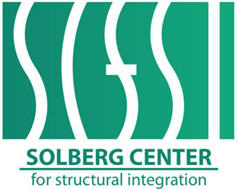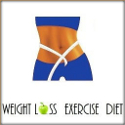-
Journey to Fitness: Listen to Your Body
Tuesday, December 30th, 2025by Samuel Lam, M.D.
Part Three: Learning to Listen to Your Body
One of my favorite health sites is Active.com, which is dedicated to triathletes. What I learned from this site is that when we constantly stress our bodies just a little bit more, our bodies grow from that stress. However, if we do not listen to our bodies and push through injuries, we lead to injuries that really set us back, if not indefinitely so.
So the final part of my advice in this series is listen to your body. When it is in pain, stop. I have come to realize there are two types of pain: muscle soreness (to me a good thing but then I back off on that area until the soreness dissipates) and ligament and joint pain (by all means, STOP!)
Bodywork: Rolfing and Deep-Tissue Massage
 Get bodywork done. I believe that structural integration or rolfing is the best body manipulation that exists. Michael Solberg, a structural integration expert in my building, has literally saved my body from injury.
Get bodywork done. I believe that structural integration or rolfing is the best body manipulation that exists. Michael Solberg, a structural integration expert in my building, has literally saved my body from injury. Over time you start to understand how your body feels and moves; and it is amazing how in tune you become with your body. I literally can guide Michael on where the restriction is and what needs to be done because I am so in tune with my body (but he really does not need my help).
Structural integration is focused on releasing fascial (connective tissue) scarring that occurs from just daily living not to mention being a surgeon and an intense fitness devotee. I also get deep-tissue massages whenever I can in my spa (or when I am traveling). Good bodywork is so important as part of any fitness regimen and limits the potential for injury and allows you to advance safely.
Take Up Yoga or Pilates
Do yoga (or pilates). I am a huge fan because it also saves my body from injury. When we only do compression workouts (everything I have described until this point), we risk injury and shorten our bodies. Yoga helps me stretch out my body so that I limit the risk of injury but also shape my body favorably.
Although structural integration helps me release much of the tightness that yoga helps me do as well, it is not enough. Yoga builds 25% more muscle strength and toning when muscles are eccentrically stimulated. In addition, yoga increases peace, mindfulness, balance, neural integration, posture, and flexibility.
Take Whey Protein after a Workout
 You must take Whey protein (I recommend Jay Robb since it is from grass fed cows that are not steroid injected) mixed with some kind of fruit immediately after your workout. I cannot emphasize enough how important this is. Your body goes into a catabolic (destructive) state after your workout and you are more prone to injury and will try to retain fat if you do not replenish it with nutrients. Eating a piece of chicken won’t cut it.
You must take Whey protein (I recommend Jay Robb since it is from grass fed cows that are not steroid injected) mixed with some kind of fruit immediately after your workout. I cannot emphasize enough how important this is. Your body goes into a catabolic (destructive) state after your workout and you are more prone to injury and will try to retain fat if you do not replenish it with nutrients. Eating a piece of chicken won’t cut it. Your body needs broken down protein (Whey is the best) and some kind of glucose (fruit is the best) to drive the protein into your cells. You can build muscles (don’t worry ladies you will not get big if you are not on steroids) and burn fat better if you take this protein shake after a workout. A protein shake is very low calorie typically and is not intended as a meal replacement. Skip the creatine. It is not good for your body.
Proper Athletic Shoes are Vital
Get good shoes. Actually get rid of your shoes. The more padding you have in your shoes the more joint problems you can have. Our feet are one of the most complex parts of our body. We were programmed to run and move barefoot. When we wear padded shoes, we lose proprioception (feeling of the ground below us), which causes us to bang our joints even harder without us knowing it.
Switching our workouts over to a relatively barefoot or minimalist style shoe should be done slowly because you will have injuries if you do so too quickly and do not build up enough foot strength. Some brands that I recommend are Vibram FiveFingers (the ultimate), Vivo Barefoots, and Merrells. (If you love Nikes, get the Nike Frees. I use those to walk in on my vacations. I prefer those as walking shoes and the Vibrams and Merrells for running. Learn more about my feeling about barefoot techniques in the section below on running.
Learn About Barefoot Running
For runners, I would recommend reading Chi Running (and the DVD) and Barefoot Running. They have both changed the way that I see running. As mentioned above, the type of shoes you wear can truly destroy you or help you. 60 to 80% of runners injure themselves. This is an alarming statistic. This can be easily avoided if one small thing were changed: moving from a heel strike to a midfoot strike.
The reason that most runners run by striking with their heels is that they wear shoes that are too padded and allow them to do that. If you change your shoes to a minimalist one or even try running for a few steps by striking your heel without shoes you will be screaming in pain. Our body will not allow that.
 When we strike our foot with our heels we transmit 7 to 8 times our body weight through our ankles, shins, knees, hips, and lower back. Strike with your forefoot and read the books that I have recommended and you can avoid injury.
When we strike our foot with our heels we transmit 7 to 8 times our body weight through our ankles, shins, knees, hips, and lower back. Strike with your forefoot and read the books that I have recommended and you can avoid injury. Again, start slowly and do not run very much when starting barefoot even if you are an experienced runner because you will injure yourself if you do not build up foot strength first.
Become a More Efficient Swimmer
For swimmers, read Total Immersion. This book will help you swim much more efficiently and with less fatigue. The concept of this book, like Chi Running, is to work with your core rather than your arms and legs. We too often think that swimming is an arms and leg activity when it should not be. When we swim with our cores rotating us then we use that as the engine and the arms and legs as propellers. It has changed my relationship to swimming. Great goggles that I love are the Italian-made Aqua Sphere Kayenne: they are sexy and do not leak.
Exercise with a Kettlebell
 Get a kettlebell. Kettlebells as popularized by ex-Soviet Pavel Tsatsouline are an amazing way to workout and build total body strength, lose weight, and tone your body in virtually minutes. I got this idea from Crossfit but more importantly from the book, The 4-Hour Body. The one that I own is the Weider version that allows for different interchangeable weights and I totally recommend watching the DVD, Enter the Kettlebell, by Pavel Tsatsouline. You do not need to buy the book. The DVD will help you minimize injury and optimize your form.
Get a kettlebell. Kettlebells as popularized by ex-Soviet Pavel Tsatsouline are an amazing way to workout and build total body strength, lose weight, and tone your body in virtually minutes. I got this idea from Crossfit but more importantly from the book, The 4-Hour Body. The one that I own is the Weider version that allows for different interchangeable weights and I totally recommend watching the DVD, Enter the Kettlebell, by Pavel Tsatsouline. You do not need to buy the book. The DVD will help you minimize injury and optimize your form.The TRX Training System
The TRX system is a great bodyweight trainer that I own. I use it for atomic pushups and to work out my back. Just Google it to see what it can do.
Buy a sandbag. The purpose of the sandbag is to make your muscles adjust as you lift the bag thereby improving balance and firing off more muscles recruited during the exercise. The best one to buy on the market is the Ultimate Sandbag, which is a bit pricey but worth it for the quality. You have to buy some Play Sand for a couple of bucks from Home Depot to fill it up.
Indoor Cycling (Spinning)
For indoor cyclists, I love Spinervals training DVDs. I use that at home on my home exercise bike. They really get you through a spin class without having to attend one. I did spin class for ten years but now I only integrate a spin class a couple of times per month to mix up my other routines. I think just doing spin all the time can make your body too used to the same motion, and as mentioned above make it too efficient leading to stunted improvement in overall fitness goals.
I hope this 3-part series on fitness has been education and helpful to you. It is my sincere wish that you too can succeed on your own journey to fitness. Best of Luck!
(published August 13, 2012)
 Samuel M. Lam, M.D. is a double board-certified facial plastic surgeon and a board-certified hair restoration surgeon. The author of five major medical textbooks, Dr. Lam lectures monthly both nationally and internationally. He is the owner of the 27,000 square foot Willow Bend Wellness Center in Dallas, Texas, which supports meditation, revitalization, rejuvenation, relaxation and wellness. Dr. Lam has succeeded in recent years with his own physical transformation through a combination of proper diet and exercise, and would like to help others do the same.
Samuel M. Lam, M.D. is a double board-certified facial plastic surgeon and a board-certified hair restoration surgeon. The author of five major medical textbooks, Dr. Lam lectures monthly both nationally and internationally. He is the owner of the 27,000 square foot Willow Bend Wellness Center in Dallas, Texas, which supports meditation, revitalization, rejuvenation, relaxation and wellness. Dr. Lam has succeeded in recent years with his own physical transformation through a combination of proper diet and exercise, and would like to help others do the same.


